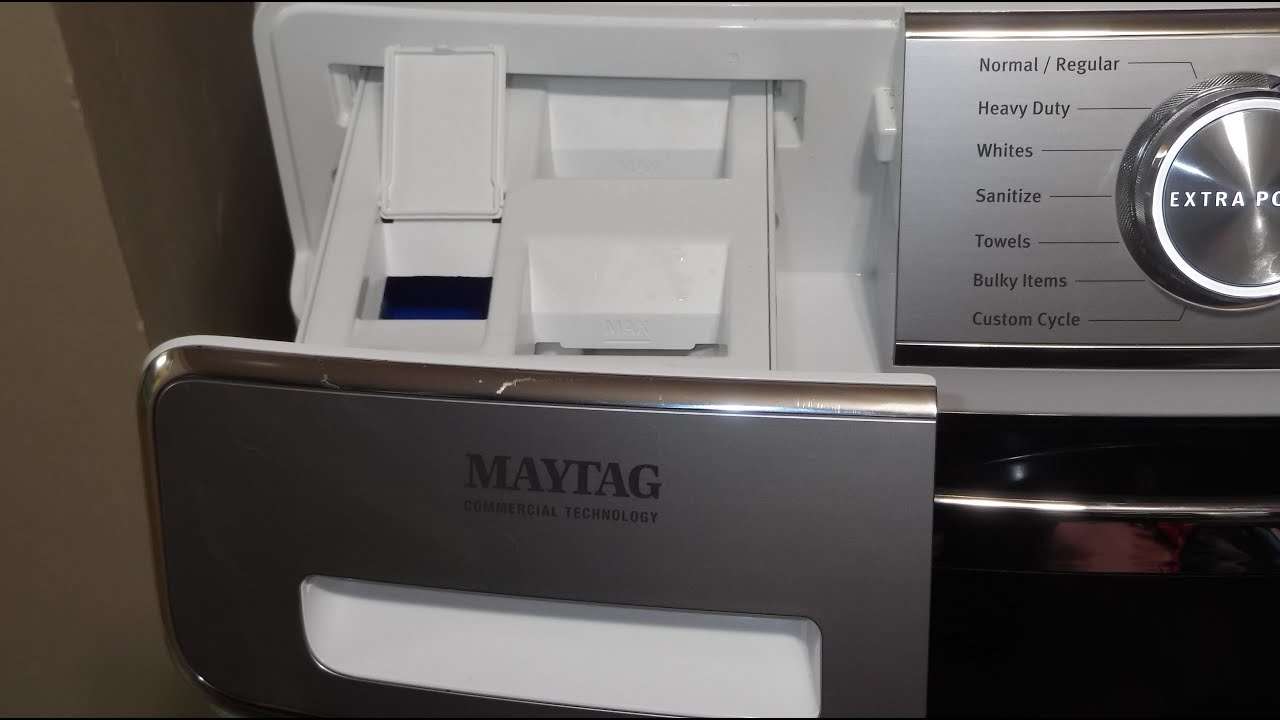The Maytag Optimal Dose dispenser‚ a seemingly simple feature designed for convenience‚ can sometimes present a puzzling problem: filling with water. This isn’t a random occurrence; several factors can contribute to this issue‚ ranging from minor adjustments to more significant component malfunctions. Understanding these potential causes is the first step in resolving this frustrating situation and ensuring your washing machine operates as intended. Diagnosing the reason why your **Maytag Optimal Dose dispenser filling with water** requires a careful approach‚ considering various possibilities before jumping to conclusions.
Potential Causes of Water in the Dispenser
- Water Inlet Valve Issues: A malfunctioning inlet valve‚ responsible for controlling the water flow into the dispenser‚ might not be closing completely. This allows a slow‚ continuous drip of water to accumulate over time.
- Siphon Effect: Improper hose placement or a partially clogged drain line can create a siphon effect‚ drawing water back into the dispenser.
- Dispenser Housing Cracks: Small‚ often invisible cracks in the dispenser housing can allow water to seep in.
- Water Pressure Fluctuations: Significant changes in water pressure can overwhelm the valve and lead to leakage.
Troubleshooting Steps
Before calling a repair technician‚ try these troubleshooting steps:
- Check Water Inlet Hoses: Ensure the hoses are properly connected and not kinked.
- Inspect Drain Hose: Make sure the drain hose is positioned correctly and not clogged.
- Verify Water Pressure: Confirm that your home’s water pressure is within the recommended range for your washing machine (usually found in the owner’s manual).
- Clean the Dispenser: Remove and thoroughly clean the dispenser housing to remove any residue that might be interfering with its operation.
Advanced Troubleshooting: When to Call a Professional
If the above steps don’t resolve the issue‚ the problem likely lies with a faulty component that requires professional attention. This might include:
- Replacing the water inlet valve.
- Repairing or replacing the dispenser housing.
- Addressing internal leaks within the washing machine.
Preventative Measures
To minimize the risk of future problems with your **Maytag Optimal Dose dispenser filling with water**‚ consider these preventative measures:
- Use the correct amount of detergent and fabric softener.
- Clean the dispenser regularly.
- Avoid overloading the washing machine.
- Schedule regular maintenance checks for your appliance.
Dealing with a malfunctioning appliance can be frustrating‚ but with a systematic approach‚ you can often identify the cause and find a solution. Ultimately‚ understanding why your Maytag’s dispenser is behaving this way will empower you to take the necessary steps to restore your washing machine to optimal performance. If you still find that your **Maytag Optimal Dose dispenser filling with water**‚ don’t hesitate to consult a qualified appliance repair technician for further assistance.
UNDERSTANDING THE OPTIMAL DOSE SYSTEM
The Maytag Optimal Dose system is designed to automatically dispense the precise amount of detergent needed for each load‚ based on load size and soil level. This feature aims to eliminate guesswork‚ reduce detergent waste‚ and ensure optimal cleaning performance. When functioning correctly‚ it contributes to both efficiency and convenience. However‚ when the dispenser begins to fill with water unexpectedly‚ it disrupts this carefully calibrated system and can lead to issues such as diluted detergent and ineffective cleaning.
THE ROLE OF COMPONENT INTERCONNECTION
The Optimal Dose system relies on a complex interplay of components‚ including:
– Water Inlet Valves: Precisely control the flow of water into the dispenser.
– Electronic Controls: Determine the appropriate amount of detergent to dispense.
– Dispenser Housing: Holds the detergent and directs it into the wash drum.
– Hoses and Tubing: Connect the various components and transport water and detergent.
A failure in any one of these components can potentially lead to the problem of water accumulation in the dispenser. It’s crucial to consider each element when troubleshooting to pinpoint the root cause of the issue.
COMPARATIVE ANALYSIS OF DISPENSER ISSUES
Issue
Possible Cause
Troubleshooting Step
Professional Intervention Needed?
Water in Detergent Compartment
Faulty inlet valve‚ siphon effect
Check hoses‚ clean dispenser‚ inspect valve
Potentially‚ if valve replacement is needed
Clogged Dispenser
Detergent buildup‚ hard water deposits
Clean dispenser with warm water and vinegar
Rarely
Dispenser Not Dispensing Detergent
Clogged dispenser‚ empty reservoir‚ sensor malfunction
Clean dispenser‚ refill reservoir‚ check sensor connections
Potentially‚ if sensor replacement is needed
The complexity of modern washing machines means that seemingly simple problems can have multifaceted origins. Thoroughly evaluating the potential causes and systematically working through the troubleshooting steps will increase the likelihood of a successful resolution. Remembering to always disconnect the appliance from the power source before attempting any repairs is paramount for safety.
Finally‚ understanding the nuances of your appliance will help you maintain its efficiency and longevity. Regular maintenance‚ prompt attention to unusual symptoms‚ and a methodical approach to troubleshooting are all key to keeping your washing machine‚ and specifically the Maytag Optimal Dose dispenser‚ functioning optimally for years to come.







